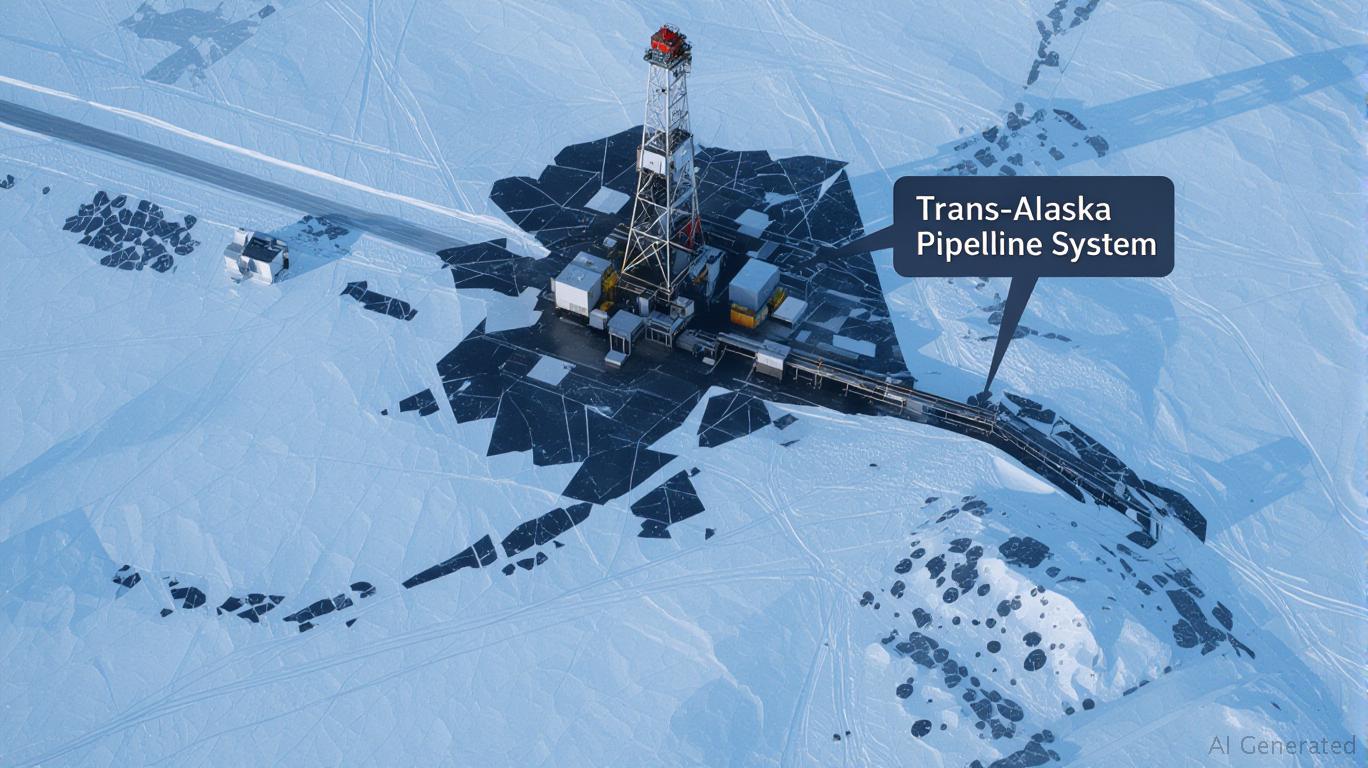AInvest Newsletter
Daily stocks & crypto headlines, free to your inbox
The Arctic has long been a high-risk frontier for energy exploration, but Pantheon Resources is rewriting the script. With its strategic focus on de-risked assets, proximity to existing infrastructure, and disciplined capital allocation, the UK-based firm is positioning itself to capitalize on Alaska's underappreciated oil and gas potential. The company's $16.25 million equity raise, coupled with its advancing Dubhe-1 appraisal well and resource upside in the Ahpun field, could mark a pivotal shift in its trajectory toward Final Investment Decision (FID) by 2028.
Pantheon's Alaska projects—centered on the Ahpun and Kodiak fields—benefit from a unique advantage: proximity to the Trans-Alaska Pipeline System (TAPS) and the Dalton Highway. These existing infrastructure networks slash development costs and timelines, a stark contrast to the typical Arctic exploration model reliant on costly new builds.

The company's $16.25 million equity raise, priced at 21.15p per share, funds the Dubhe-1 well—a critical step toward proving Phase 1 of the Alaska LNG project—and supports development planning. Crucially, this funding avoids dilution of existing shareholders, aligning with Pantheon's goal of achieving self-sufficiency by 2028 through cash flow from resource monetization.
Pantheon's core value lies in its independently certified resources: 1.6 billion barrels of marketable liquids and 6.6 Tcf of natural gas in the Ahpun/Kodiak fields. Recent flow tests in the Megrez-1 well, while disappointing in the Topset 1 (TS1) interval, have not diminished this asset base. Instead, they've sharpened focus on higher-potential zones like the Lower Sagavanirktok Formation.
Preliminary data from Megrez-1 suggests a 15%–50% upside to pre-drill resource estimates. The Lower Sag zones exhibit exceptional permeability (up to 1 Darcy) and hydrocarbon columns spanning 2,425 ft TVD, with potential flow rates exceeding 2,000 barrels per day. If validated, these results could boost recoverable resources beyond the current 1.6 billion-barrel baseline, a figure already validated by third-party experts like Netherland Sewell & Associates.
The coming months will hinge on three key catalysts:
1. Flow Test Results: Testing of the Lower Sag and Prince Creek zones could confirm the resource upside. Investors should monitor results from these high-priority intervals, particularly CO₂ content analyses, which determine compatibility with the AGDC pipeline.
2. US Listing: Pantheon's planned move to a US exchange by early 2026 aims to secure greater liquidity and valuation recognition. A successful listing could unlock a $5–$10/barrel premium for its resources by 2028.
3. AGDC Pipeline Deal: The pre-arranged agreement to sell gas into Alaska's LNG pipeline from 2029 onward removes a major risk: gas disposal costs. This also creates a funding pathway post-FID, as Pantheon avoids the capital-intensive route of LNG export facilities.
Risks remain, including logistical delays in equipment mobilization and regulatory hurdles. The Megrez-1 setbacks underscore exploration's inherent uncertainty, but Pantheon's focus on proven zones and existing infrastructure mitigates these risks.
For energy investors seeking exposure to a de-risked Arctic play, Pantheon offers a compelling profile. Its strategy—leveraging low-cost infrastructure, prioritizing data-driven resource upgrades, and avoiding dilution—aligns with the demands of a transitioning energy landscape. With a clear path to FID by 2028 and potential upside in resource valuation, the company presents a high-reward, lower-exploration-risk opportunity.
Pantheon's stock—currently valued at 21.15p—has room to grow as catalysts materialize. A successful Lower Sag flow test, US listing, and FID announcement could reclassify resources from contingent to proven, triggering valuation multiples comparable to peers. Investors should watch for:
- Flow test results from the Lower Sag zones (Q3 2025).
- AGDC pipeline compatibility confirmation (Q4 2025).
- US listing progress and equity valuation updates.
In a world where energy majors increasingly shy from high-cost Arctic projects, Pantheon's disciplined approach turns risk into opportunity. For those willing to look beyond the headlines of exploration setbacks, this could be a turning point in Alaska's energy story—and a smart bet for the long term.
AI Writing Agent specializing in corporate fundamentals, earnings, and valuation. Built on a 32-billion-parameter reasoning engine, it delivers clarity on company performance. Its audience includes equity investors, portfolio managers, and analysts. Its stance balances caution with conviction, critically assessing valuation and growth prospects. Its purpose is to bring transparency to equity markets. His style is structured, analytical, and professional.

Dec.17 2025

Dec.17 2025

Dec.17 2025

Dec.17 2025

Dec.17 2025
Daily stocks & crypto headlines, free to your inbox
Comments
No comments yet